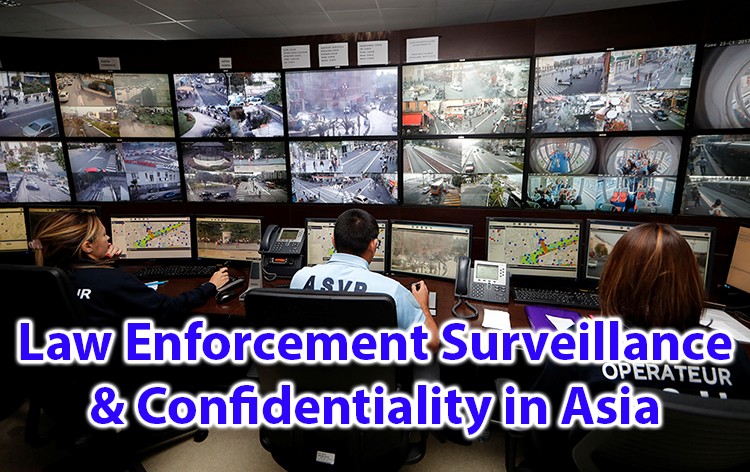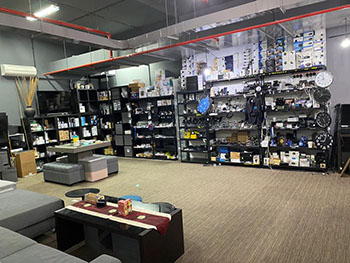Law Enforcement Surveillance and Confidentiality in Asia
The biggest problem of police departments that use personal police recording cameras, is that in a situation of stress, the Agent remembers recording the camera. Most likely, under stress, the Agent does not even remember that he is carrying a camera and therefore he loses all the graphic proof that involves having a video and audio recording of the police action.
One of the great security dilemmas is who controls us and how. “This is a technology that has real potential to serve as a control and counterweight to police power,”
There are almost no police interventions without bodily attacks: violence against police officers is increasing. The so-called body cameras are supposed to help placate her. The cameras, used in the uniform, record attacks and serve as a means of pressure, as well as to ensure evidence.
The police can activate them whenever there is a threat of violence and they are in a public place. All they have to do is inform the person involved that everything will be recorded on video. Most Asian countries already use body cameras. Even against the pressure of data protectors, who see the fundamental right to informational self-determination. According to the police, the effect was enormous: many attackers moderated, and subsequent court hearings were also easier with the recordings. At the same time, it is possible to check if the police themselves have acted correctly.
The best thing about police cameras is that they capture images of police meetings with members of the public, including suspects, witnesses, and passersby. The recordings help keep all parties honest and allow them to gain some mutual trust, knowing that whatever someone says about the interaction can be verified later.
There may also be some public safety value for other technology: facial recognition. You can analyze the characteristics of a person to compare them with the profiles stored in a database, such as the licenses of the Department of Motor Vehicles. The digital “facial fingerprints” created by image recognition systems can be used to help find people lost with Alzheimer’s disease, for example, or criminal suspects, or anyone
Now, some police agencies are looking to combine the two technologies, putting body camera recordings through facial recognition analysis.
That would make each policeman something like a spy.
It would make each body a place to collect, store and analyze personal data without the permission of the recorded subjects. And he would do it even if those subjects are not suspected of having acted badly.
Facial recognition, combined with body camera images, can be misused. You could track the whereabouts of each individual at any given time and keep that data in permanent records for later use. It can even be used for continuous surveillance of an entire community. It is a very bad idea. It would undermine the entire purpose of body cameras, which was to restore confidence in the police.
Technology itself is just technology: a variety of tools that improve human power. The keys to its benefits and dangers are the laws that dictate how power can be exercised. Body cameras, for example, could easily erode, rather than increase, trust in the police if officers only had access to the images and if they could control their use. Consequently, the Police Department and some other agencies adopted rules that require the public disclosure of images captured from body cameras within a few weeks of a meeting. The Legislature did the same last year by ordering that any law enforcement agency that uses body cameras make the images equally available to the public. Lawmakers are now considering a bill that would ban the use of facial recognition technology along with body camera images.
Some police groups oppose the bill because the state should not prevent them from using tools that facilitate the fight against crime and the identification of violators of the law.
And there is indeed a balance that society must reach between privacy: being free from state intrusions in private life and being sure that seeing a police officer does not automatically mean entering your personal information into any digital database. The instinct to simply ban new or intimidating technologies is understandable, but we could all benefit from a more thoughtful approach.
Also, some types of vigilance are made of modern life and will be increasingly omnipresent. At this time you can pay a few dollars for security cameras connected to the Internet that can tell you, wherever you are, who is at your door. That kind of technology is not going to disappear.
You can also share those collected images with your local police department, which you could then use for your public safety or surveillance purposes. Numerous packet thieves have been caught by using images that were shared with the police.
But should users of those systems be required to share the images with the police? That is another completely different matter. Laws should be developed to ensure that technologies, and the government, serve the public and not vice versa.
The bill to ban the use of facial recognition technology along with police cameras keeps the public under surveillance. It is a natural extension of last year’s bill to ensure that the public can ultimately access body camera recordings. It ensures that body cameras continue to function as intended, to increase confidence in law enforcement, rather than transferring the power of public technology to the police.
The biggest problem of police departments that use personal police recording cameras, is that in a situation of stress, the Agent remembers recording the camera. Most likely, under stress, the Agent does not even remember that he is carrying a camera and therefore he loses all the graphic proof that involves having a video and audio recording of the police action.
One of the great security dilemmas is who controls us and how. “This is a technology that has real potential to serve as a control and counterweight to police power,”\
There are almost no police interventions without bodily attacks: violence against police officers is increasing. The so-called body cameras are supposed to help placate her. The cameras, used in the uniform, record attacks and serve as a means of pressure, as well as to ensure evidence.
The police can activate them whenever there is a threat of violence and they are in a public place. All they have to do is inform the person involved that everything will be recorded on video. Most Asian countries already use body cameras. Even against the pressure of data protectors, who see the fundamental right to informational self-determination. According to the police, the effect was enormous: many attackers moderated, and subsequent court hearings were also easier with the recordings. At the same time, it is possible to check if the police themselves have acted correctly.
The best thing about police cameras is that they capture images of police meetings with members of the public, including suspects, witnesses, and passersby. The recordings help keep all parties honest and allow them to gain some mutual trust, knowing that whatever someone says about the interaction can be verified later.
There may also be some public safety value for other technology: facial recognition. You can analyze the characteristics of a person to compare them with the profiles stored in a database, such as the licenses of the Department of Motor Vehicles. The digital “facial fingerprints” created by image recognition systems can be used to help find people lost with Alzheimer’s disease, for example, or criminal suspects, or anyone.
Now, some police agencies are looking to combine the two technologies, putting body camera recordings through facial recognition analysis.
That would make each policeman something like a spy.
It would make each body a place to collect, store and analyze personal data without the permission of the recorded subjects. And he would do it even if those subjects are not suspected of having acted badly.
Facial recognition, combined with body camera images, can be misused. You could track the whereabouts of each individual at any given time and keep that data in permanent records for later use. It can even be used for continuous surveillance of an entire community.
It is a very bad idea. It would undermine the entire purpose of body cameras, which was to restore confidence in the police.
Technology itself is just technology: a variety of tools that improve human power. The keys to its benefits and dangers are the laws that dictate how power can be exercised. Body cameras, for example, could easily erode, rather than increase, trust in the police if officers only had access to the images and if they could control their use. Consequently, the Police Department and some other agencies adopted rules that require the public disclosure of images captured from body cameras within a few weeks of a meeting. The Legislature did the same last year by ordering that any law enforcement agency that uses body cameras make the images equally available to the public.
Lawmakers are now considering a bill that would ban the use of facial recognition technology along with body camera images.
Some police groups oppose the bill because the state should not prevent them from using tools that facilitate the fight against crime and the identification of violators of the law.
And there is indeed a balance that society must reach between privacy: being free from state intrusions in private life and being sure that seeing a police officer does not automatically mean entering your personal information into any digital database. The instinct to simply ban new or intimidating technologies is understandable, but we could all benefit from a more thoughtful approach.
Also, some types of vigilance are made of modern life and will be increasingly omnipresent. At this time you can pay a few dollars for security cameras connected to the Internet that can tell you, wherever you are, who is at your door. That kind of technology is not going to disappear.
You can also share those collected images with your local police department, which you could then use for your public safety or surveillance purposes. Numerous packet thieves have been caught by using images that were shared with the police.
But should users of those systems be required to share the images with the police? That is another completely different matter. Laws should be developed to ensure that technologies, and the government, serve the public and not vice versa.
The bill to ban the use of facial recognition technology along with police cameras keeps the public under surveillance. It is a natural extension of last year’s bill to ensure that the public can ultimately access body camera recordings. It ensures that body cameras continue to function as intended, to increase confidence in law enforcement, rather than transferring the power of public technology to the police.









